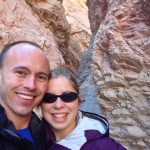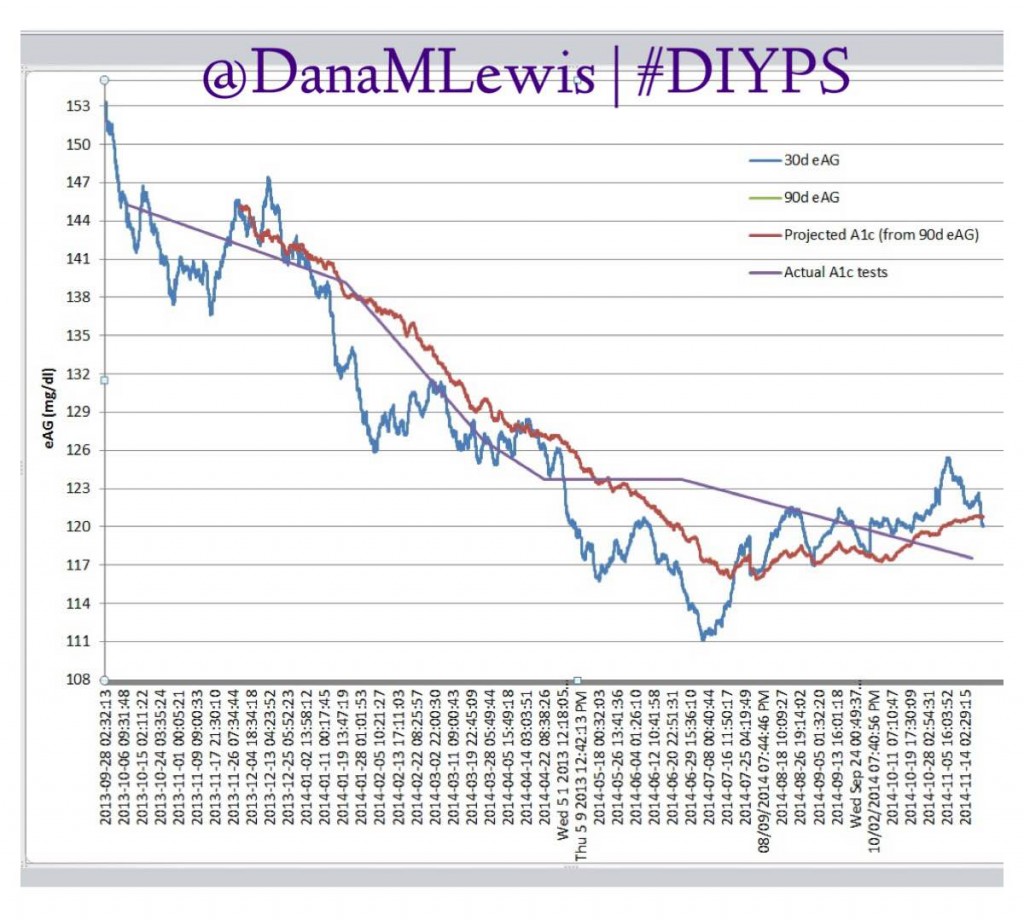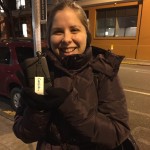Do It Yourself Diabetes
Ernesto Ramirez
February 17, 2015
Dana Lewis and Scott Leibrand are the creators of the amazing “Do-It-Yourself-Pancreas-System,” also known by #DIYPS. We had a few question for them.
Dana:
I’ve had Type 1 diabetes for about 12 years. I use an insulin pump and a continuous glucose monitor (CGM), but the devices are separate. They don’t talk to each other. I have to look at the data from the CGM and then make decisions about my insulin. I have to make about 300 decisions per day on average. It’s really fatiguing. So we created some algorithms that took my blood glucose data, the amount of insulin that I’ve given myself, and the amount of carbohydrates that I’ve decided that I’ve eaten, and ran them over and over again to give me a prediction of what my blood sugar was going to be and whether I need to take any action. Instead of having to constantly do the math myself, our system will push an alert to my phone or watch.
DIY Pancreas System = #DIYPS = real time remote monitoring & custom alerting; smart calculations; estimated outcomes; suggested actions.
— Dana | #hcsm #DIYPS (@danamlewis) February 5, 2014
Ernesto: Does it dose you automatically?
Dana: Originally no, but more recently we’ve built a full closed loop version of #DIYPS, that is essentially an artificial pancreas, that talks to my pump and adjusts to give me a little more or a little less insulin.
Ernesto: Who writes the code?
Scott: I’m doing all the coding. I’m sure Dana could, but she has a lot going on and designs the algorithms. My title is Chief Spaghetti-Coder. This is the bleeding edge. It doesn’t need to be elegant code.
Ernesto: What have you learned from building your own pancreas?
Dana: The beauty of a CGM is that it gives you a data point every five minutes. Over the past year I’ve produced more than 130,000 data points of blood sugar levels alone. That gives me an incredible picture of what’s happening. With a traditional meter, it’s rare to find somebody who tests up to even 10 times a day. And the standard use for an insulin pump is very much “set it and forget it.” The #DIYPS allows me to customize without having to constantly adjust my insulin pump manually, and that frees me up to live my life, work, and do whatever it is that I want to do.
Ernesto: How did this project start?
Dana: We first started building the system just to make the alarms on the device louder, to wake me up because I would sleep through them. The device manufacturers didn’t seem to have a solution. Then we started looking at getting the data onto a computer so Scott would be able to view it. At the time, we had recently started dating, and he lives 20 miles away. I wanted him to be able to see what my blood glucose level was, so if it was low, he could text me; and if I didn’t respond, he could call 911. But we didn’t have a way to get the data off of the device.
Scott: The key moment was when we saw a tweet from John Costik, who was working on the Nightscout Project. Nightscout is open source code that helps people transmit their CGM data to other devices. I tweeted John right away: “Hey it would be awesome if we could get access to this code.” That’s really where it started. And along the way the whole process has been extremely public. We’ve been tweeting, blogging, and making everything we’ve been doing completely visible.
USB driver done, Dexcom G4 commands deciphered… Phone shopping for E tomorrow? #T1D CGM everywhere! pic.twitter.com/HLoTma9IMv
— John Costik (@jcostik) May 13, 2013
@jcostik Have you published this anywhere yet?
— Scott Leibrand (@ScottLeibrand) November 7, 2013
Ernesto: I’ve seen you tweet using the hashtag #wearenotwaiting. What does that mean?
Dana: #WeAreNotWaiting is a hashtag that was coined at a conference hosted by an online diabetes advocacy and information sharing community called DiabetesMine.com. For me it means that we’re not waiting for traditional device manufacturers to come out with the product. In three to ten years there’ll be devices like our artificial pancreas systems out in the market, being sold by companies approved by the FDA. I need to be alive when that system gets out in the market in, perhaps, five years.
I need to be alive when a cure becomes available.
Scott: Right about the time that we started working on #DIYPS, the Nightscout Project started to grow really quickly. There are now over 10,000 people in the CGM in the Cloud group. Over 2,000 people are using Nightscout to view their own or their loved ones’ blood sugar levels remotely on phones, watches, and other devices. This is real stuff that’s making a real difference in the world. And that’s only going to accelerate as more people do more interesting things like this closed loop that we’ve just done.
Ernesto: You’ve written about “data as free speech.” What do you mean? How can data be speech?
Dana: People often don’t understand why its legal for us to ‘hack’ a CGM and an insulin pump. (Note that hacking isn’t a negative thing; we’re just sharing the data across devices!) They assume that because all my DIY gadgets are not FDA-approved to use them the way I’m using them is somehow against the rules. But I can treat my own body, my own diabetes, the way I want to. And if I share my data, that’s obviously a kind of speech. But if we decide to share our code? I think the FDA sees this as a gray area. We very much want to continue our conversations with regulators.
Ernesto: Where do you see your project going?
Dana: I feel that every time I answer this question my answer changes, because my understanding of its potential is constantly changing. I never would have thought that any of what we’ve done was possible. Right now one of our goals is to make sure that the knowledge we gained about diabetes through our work with #DIYPS is adopted by clinicians, and that patients have access to this new information for treating diabetes. We’re also taking #DIYPS to a new level with #OpenAPS, an open and transparent effort to make safe and effective basic Artificial Pancreas System (APS) technology widely available to more quickly improve and save as many lives as possible and reduce the burden of Type 1 diabetes.
Scott: A few of months ago, at a conference convened by the advocacy group DiabetesMine, we got up and talked about our project, and I said: “I’m putting a stake in the ground that we’re going to make a closed loop artificial pancreas by August 1st, which is the date we’re getting married.” Everybody applauded and thought that was awesome. Then we went home. And we had it done in two weeks.Dana: For anybody who wants to get involved in this, we would love to talk to you. There are so many people with diabetes and there is so much data that drives the management of this disease.
But there’s not a lot of awareness of how many diseases, including diabetes, could have their care revolutionized just by having better access to data.
That’s the thread of Quantified Self that I’m most interested in. The diabetes community happens to be one of the first to take advantage of what’s possible.
BGs while talking to @eramirez with @ScottLeibrand about #quantifiedself and #DIYPS. pic.twitter.com/BSCQ3yk1gK
— Dana | #hcsm #DIYPS (@danamlewis) January 23, 2015
Dana tweeted her blood glucose data during this interview.
We invite you to share your data access stories, and this Access Conversation with the #qsaccess hashtag and follow along here in our Access Channel quantifiedself.com and @quantifiedself.







